This post is written by aviation and photography enthusiast Drew Vane about the MD-80:
Ahhh. I remember the good ole days when the aircraft were loud, smoked like a B-52 and fuel efficiency was unheard of. No, I’m not talking about the 60’s. I’m talking about yesterday.
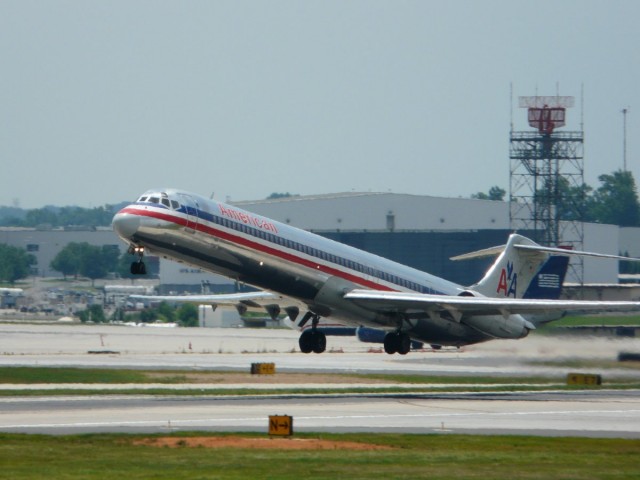
An American Airlines MD-83 (Super 80) lifts off of Runway 36C at Charlotte-Douglas International Airport.
As commercial aircraft manufacturers transitioned from props to jets, Douglas Aircraft Corporation developed a smaller jet aircraft for the shorter range domestic market. The 90seat DC-9 first flew in 1965 and gave birth to additional series, culminating with the 50-series under the original DC-9 design. McDonnell-Douglas introduced its newest, longer version of the DC-9, fondly called the DC-9 Super 80, or MD-80. This 142-seat product of Long Beach, CA got its start with PSA Airlines (eventually to become US Airways). The MD-80 added 15 feet in length and 20 feet in wingspan, resulting in an additional 28 seats to the 139-seat DC-9-50.
Similarly, the MD-80 family (also called the ’œMad Dogs’) has improved with each subsequent version. The MD-88 added aerodynamic improvements for longer range, a redesigned tail-cone, and glass cockpit. The MD-90 upgrade increased capacity to 150 passengers and replaced the Pratt & Whitney JT8D engines with quieter, more fuel efficient IAE V2500 engines. Following the merger of McDonnell-Douglas with Boeing in 1997, a further upgrade, the MD-95, was born which eventually became the 117 seat Boeing 717. The 717 added a more advanced cockpit, more efficient engines, fly-by wire controls, and other features to bring it into the 90’s and beyond. Strangely, the AFC (or Advanced Common Flightdeck) most closely resembles that of the massive MD-11. Over 2,400 DC-9 series aircraft have been produced over the last 40 years.
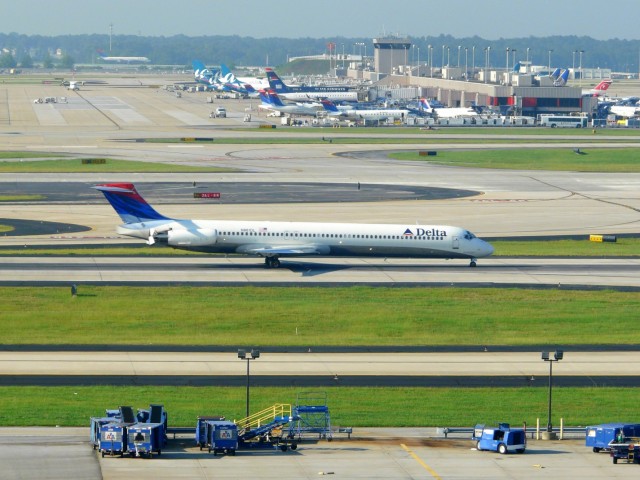
Look Ma! No Rabies! A Delta Air lines MD-88 slows after landing at Atlanta’s Hartsfield International Airport
Although the seating configuration is a bit skewed (2-3), today you’ll still find these workhorses on domestic routes for Delta, American and Allegiant here in the US. The Boeing 717 is flown in the US by AirTran (soon to be Southwest) and Hawaiian Airlines. As of midway through 2010, there were over 450 Mad Dogs still flying here in the US with 100 or so still active in other countries.
Its been a long time since my last Mad Dog flight but I was pleasantly surprised last November when I flew with my family on an AirTran Boeing 717 down to Florida. The holidays brought free WiFi and the aircraft just felt newer compared to my memories of the Mad Dogs. Here in Charlotte, there are ample opportunities to spot the Airtran 717’s and Delta MD-88’s bound for Atlanta as well as the fully loaded American Super-80 bound for Fort Worth that seems to use every inch of the runway on taking off.
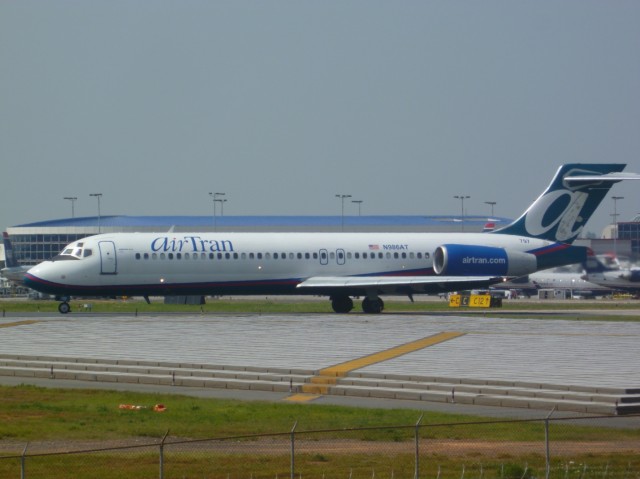
Mad Dog Wannabe: An AirTran Boeing 717 taxis onto Runway 18L at Charlotte Douglas International Airport.
Unfortunately, the sun is slowly setting on these older aircraft as more eco-friendly, and efficient domestic jets continue to enter the market. American recently announced its plan to replace its fleet of MD-83’s (in addition to its 757’s and 767’s) with re-engined Boeing 737 and Airbus A320neo jets and its expected that Delta will follow in its footsteps to stay competitive. Have you had the opportunity to ride on these gas guzzlers lately? I’d love to hear about your experience.
More info on the background of the MD-80 here and MD-90 here.
All photos by Andrew Vane
Last week I had the chance to check out American Airline’s newest aircraft — a Boeing 737-800 with Boeing’s Sky Interior. This is just one step in American renewing their fleet and brand.
The airline is currently in the process of replacing their aging MD-80 aircraft with new Boeing 737s. American plans to retire at least 25 MD-80s in 2011 and it is not exactly known when all MD-80s will be out of service. American will receive an additional 54 Boeing 737s with Sky Interior over the next two years (story continues below photos).
-
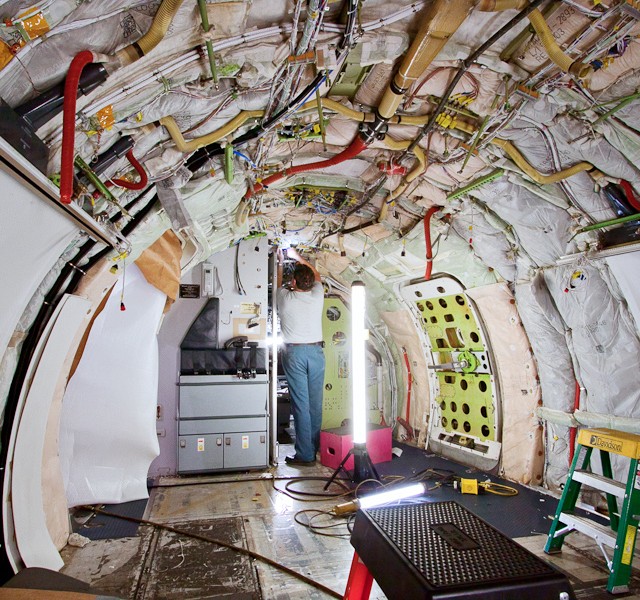
-
Inside the cabin of an American 737 being retrofitted.
-
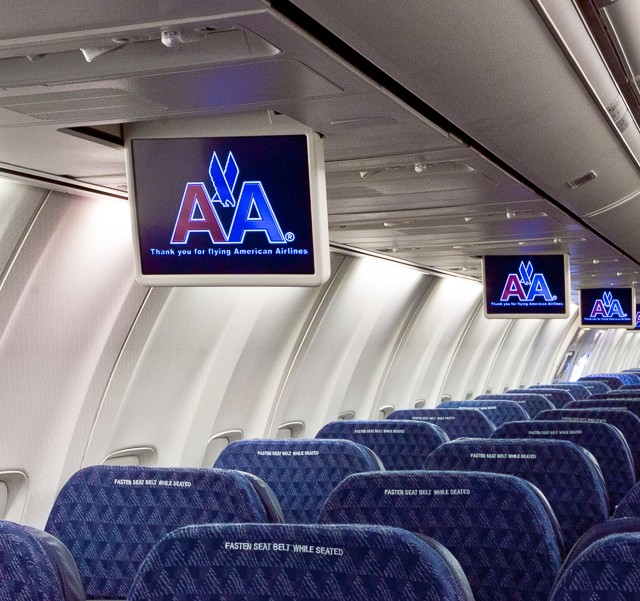
-
New pop down LCD screens are being in stalled.
-
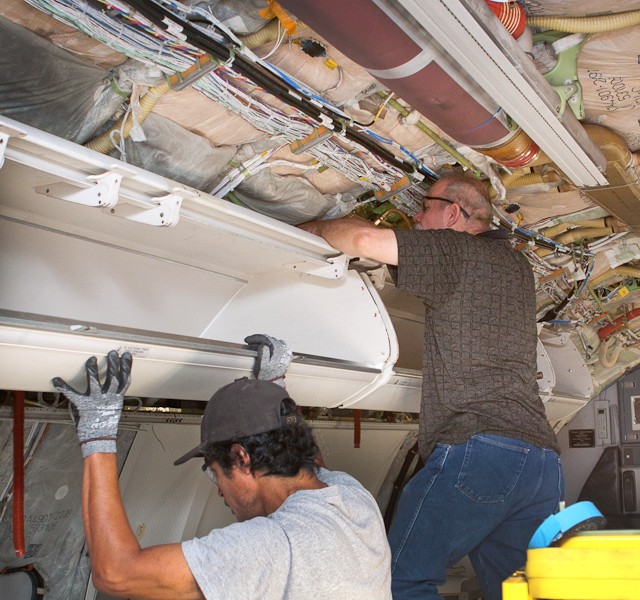
-
New bins are being in stalled on AA
-
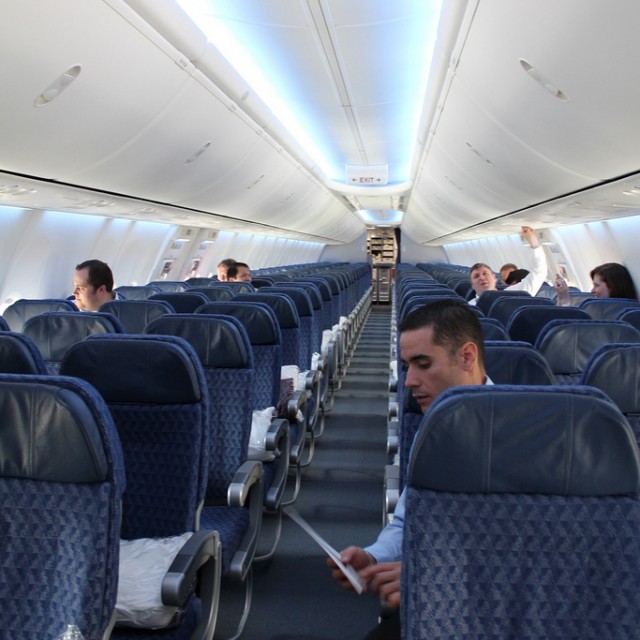
-
American’s new Sky Interior looks updated and clean.
Click photos for larger version. All retrofit photos by American, Sky Interior by Airline Reporter.
The airline plans to upgrade their older 737s to have newer seating and larger bins. In May 2010, American began updating its existing fleet of Boeing 737s. The retrofit includes the installation of new seats, new cabin interiors, updated in-flight entertainment systems and more storage throughout the aircraft. The retrofit is slated for completion by the first quarter of 2013. The retrofits will be handled in-house by American employees at the airline’s Maintenance & Engineering base located in Tulsa, OK.
Video: American Airlines Boeing 737 gets makeover
American is also in the process of updating all Boeing 757s used on domestic routes. Updates include the installation of new seats, new cabin interiors and updated in-flight entertainment throughout the aircraft. Also, First Class will receive two additional seats, which increases the number of First Class seats from 22 to 24 on each aircraft. The 757 aircraft enhancements began in August 2010 and have a planned completion of December 2015. As of early May 2011, American has completed upgrades to ten 757s.
American will also be increasing their fleet of Boeing 777s with the addition of five 777-300ERs with deliveries slated for 2012 and 2013. The -300ERs will supplement their -200ERs and will become the largest aircraft that American flies.
“American Airlines has made a significant investment to enrich the flying experience for our customers through the purchase of new aircraft and the refurbishment of our existing fleet,” said Virasb Vahidi, American’s Chief Commercial Officer. “At American, we are focused on providing a differentiated customer experience, with a distinct focus on best delivering what premium customers value most ’“ world-class products and services. The delivery of the first 737-800 with the new Boeing Sky Interior is our most recent step to deliver on this commitment.”
In the past, there have been times where I had serious concerns about American’s future. They had an aging fleet of aircraft and were not merging like other large airlines. They also had a lack of a solid presence on social media and really just weren’t as “fun” as other airlines. It appears that American realizes they need to change the way they do business to better compete against other airlines. American has already spent $5.5 billion in new aircraft, facility enhancements and on-board improvements between 2007 to 2011 and plans to spend more in the future.
American is trying very hard to stay relevant and hoping that customers will take notice of their effort. Will it be enough to survive without a merger? Only time will tell, but it seems American is on a positive track.
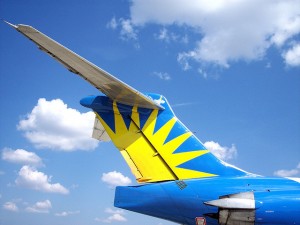
Allegiant MD-80 tail with a clear blue sky
Allegiant Air announced today that they will be adding 16 additional seats to most of their MD-80 aircraft. All of the 48 currently operating and nine of the additional ones will be operating with 150 seats will be changed to accommodate 166 seats. The three MD-87’s that hold 133 seats will not be changed.
Allegiant is investing $50million into this change, which includes removing the galleys. They will start the changes near the end of 2011 and will be completed by the end of 2012.
“These added seats will allow us to grow our capacity with the least amount of risk,” Andrew C. Levy, Allegiant President, said. “This project effectively increases our capacity by 11 percent while lowering our cost per seat. In addition, we expect to fund this through internally generated cash-flow.”
This investment shows that Allegiant will continue with their fleet of MD-80 aircraft as well as their newer Boeing 757s for the future.
Due to the increase in passengers, Allegiant will be adding a fourth flight attendant to the 166 passenger aircraft. This increases the ratio of flight attendant to passenger from 1:50 to 1:42.
I wondered if this would mean Allegiant would offer less seat pitch for customers. Just back in 2004, Allegiant made a big deal about taking out three rows of seats to provide more leg room (thanks to Dan Webb for that link). I asked Jordan McGee, Director if Allegiant Corporate Communications and she explained that all Allegiant’s aircraft are not configured the same, but even after the conversion to 166 seats, all the aircraft will have a seat pitch between 30-32 inches.
“Our current seat pitch varies by aircraft because of different configurations, but our average is 30-32 inches. We also have quite a few seats at 33 inches and then some upwards of that, depending on the aircraft. Once we make the conversion to 166 seats, each seat will be between 30-32 inches,” McGee explained.
If they aren’t using the galleys to serve food, why have them? Heck, if Allegiant can put in more seats and more flight attendants while not taking any leg room away from me and while trying to keep fares competitive, I am all for it.
Image: p1anespotting







